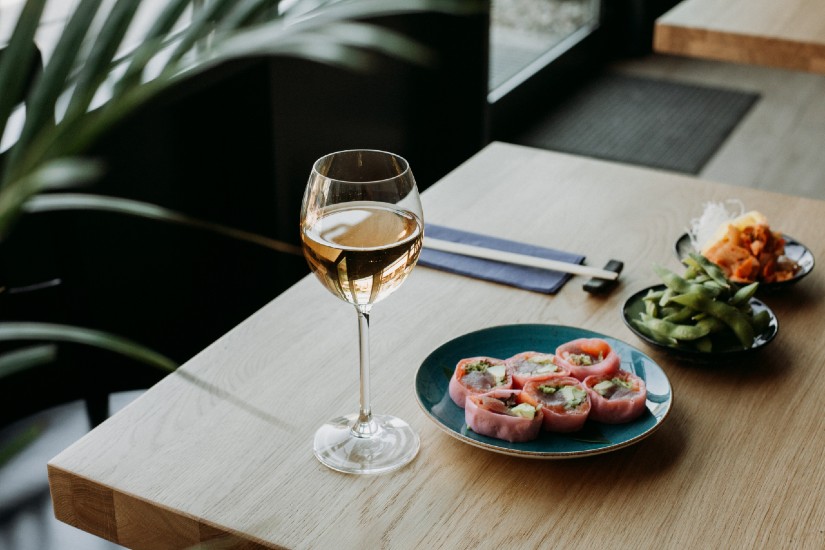
The Keys to Successful Wine and Food Pairing
In a recent company trip to Sonoma County, California, our group of seven experienced a cornucopia of wines and foods that were perfectly paired. “How do they create this?”, an attendee asked? “This pairing is phenomenal”, said another. And true, these dishes were perfectly paired. From a gorgeous Jordan Winery 2011 Cabernet Sauvignon paired with an exquisite cheese plate to a St. Francis Zinfandel paired with a sumptuous sherry-soy glazed pork belly slider, the care and thoughtfulness into each pairing was remarkable. But you don’t need to travel to Sonoma to experience great food and wine pairings. By understanding the five basics, you too can create sumptuous pairings whose sum is greater than their parts.
The first key to food and wine pairing is this: The acidity of the food should be the same or less than the acidity of the wine. High acid foods such as tomato sauces, pickled veggies and salads finished with vinaigrettes are all perfect candidates for high acid wines. Examples of high acid red wines include French Pinot Noir, Italian Sangiovese, and a slew of white wines such as Sauvignon Blanc. If the acid of the food outpaces the wine, the wine will seem ‘flabby’ or too soft for in the pairing.
Second, the sweetness of the food should be the same or less than the wine. Sugar is a challenging pairing for dry (no sugar) wines. In the best case scenario, they lose their fruity components, in the worst case, they become bitter, spirity and sour. We have many foods in our culture with ‘hidden’ sugar from bottled barbeque and tomato sauces to salad dressings and as such, choosing a wine with a hint of sugar can make for a great pairing. Off-dry Rieslings and Extra Brut Proseccos are fantastic with those tricky slightly sweet salad dressings or candied nuts while extra fruity Zinfandels pair wonderfully with sweeter sauces. For desserts, consider sweet, fortified wines such as ruby Ports to pair with chocolate. Or, consider sweet white dessert wines such as Sauternes or Ice Wine for apple and stone fruit based desserts.
Matching the weight and richness of the food with the body of the wine is the third key to food and wine pairing. Think of a rich and full-bodied Chardonnay paired with a cream sauce or a light to medium bodied Pinot Noir or Gamay with Turkey and a tart Cranberry Sauce. By matching the weights of the food to the wine, you help increase the matching of textures and success of the pairing.
Flavor intensity and persistence in food is often greater than the wine leading to a likely mismatch. When a food and wine pairing don’t succeed, it’s typically the wine that bears the brunt of the criticism because the food overwhelms the positive wine attributes. Therefore, the fourth key to food and wine pairing is matching the flavor intensity and persistence of the food with the wine. Think of blue cheese which has extreme persistence (whether you like it or not!). Pairing it with a lightly flavored Pinot Grigio does it no favors as all you’ll taste is watered-down blue cheese. Now, pair the blue cheese with a Tawny Port as a dessert course and the high intensity and persistence of both with match and create a symphony!
Lastly, matching or contrasting flavors are the last major key to food and wine pairing. Holiday ham cooked with cloves and spices pairs well with oaked Pinot Noirs where the flavor of the oak spice and fruity style are well matched. Lemon basil pasta and Pinot Grigio? A classic pairing. Looking to contrast flavors? This can be tricky, but a great contrast is smoked Turkey with Riesling (dry or off dry). The flowery notes of the Riesling contrast well with the smoked note of the turkey and create a symphony.
Food and wine pairing is often seen as challenging and an ‘expert level’ skill. However, with these five keys of matching food and wine you’re well on your way to creating synergistic pairings. Cheers!
The Aftertaste: The term “hot” when referring to a wine means that the alcohol is very prominent and stands out from the rest of the wine components. Generally this is not a good thing as we are looking for balance in the wine’s components. But a “hot” wine can help to warm you up on a cold night!